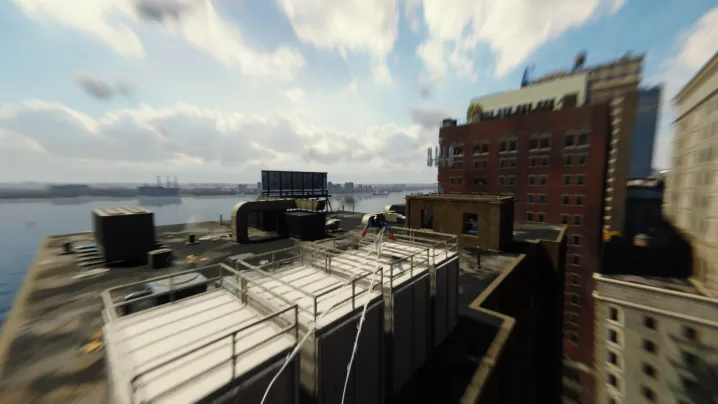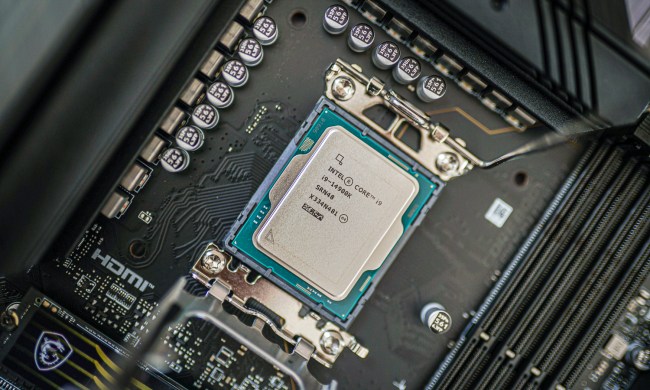PC gaming is filled with jargon that mixes together marketable names with scientific descriptions to create a pile of terms that are next to impossible to decipher. Knowing the vocabulary of graphics terms is important for optimizing your performance, understanding your games, and tweaking your graphics menus, and we’re here to define all of the labels flying around.
We’re focusing on terms that you’ll find commonly in games that don’t have an obvious definition — we trust you can figure out what “reflection quality” means — but there may be some terms we missed. If there’s something you’re wondering about, click that author name on top of this article and shoot me an email.
Graphics settings

Let’s start at the top with the graphics menu. Here, we’re looking at terms that may not be obvious at first glance rather than all of the settings you see in a graphics menu. Settings like texture quality and shader quality refer to, well, the quality of textures and shaders, respectively. We’re digging a little deeper for settings that don’t explain themselves.
You won’t find all of these options in every graphics menu. In most games, you’ll only see a handful of them. However, knowing all the terms sets you up to know what you should tweak.
- Anti-aliasing — See Aliasing. Anti-aliasing fixes the jagged edges of pixels that show up on the edges of objects.
- TAA — Temporal Anti-Aliasing. Uses information from current and past frames to feed the anti-aliasing algorithm.
- FXAA — Fast Approximate Anti-Aliasing. Works across the entire screen to provide anti-aliasing, reducing performance cost and image quality.
- SMAA — Subpixel Morphological Anti-Aliasing. Works similarly to FXAA, but uses multiple samples per pixel to improve image quality. It’s more demanding than FXAA.
- MSAA — Multisample Anti-Aliasing. Takes multiple samples from pixels around edges to perform anti-aliasing, and it has a large performance cost.
- Anisotropic Filtering — This is texture filtering that improves the quality of textures when viewed at oblique angles. Generally a negligible performance cost, though it can become demanding with large textures and low amounts of VRAM.
- Ambient Occlusion — Shadows cast by objects occluding (blocking) the light from reaching another object. For example, a book sitting on a shelf will cast a soft shadow near where it meets the base of the shelf. This is ambient occlusion.
- Asynchronous Compute — Allows computation to happen in an asynchronous manner in the game. For example, your CPU will begin loading and decompressing assets while your GPU continues to render the game. It sometimes induces a performance impact for a more stable gameplay experience.
- Global Illumination — Lighting that takes into account all light sources in a scene, not just direct light sources. This includes reflections, light bounces, and shadows that impact the global light of the scene, rather than the light coming from any individual source.
- LoD — Level of detail. Most PC games use primitive, low-quality models of objects when they’re out of view of the camera, adjusting the LoD as the camera gets closer to swap in more detailed models.
- Ray Tracing — A lighting technique in which rays cast from a light are followed throughout a scene to calculate reflections, shadows, and global illumination. It’s very demanding, especially when a game uses path tracing (otherwise known as full ray tracing).
- Screen Space Shadows and Reflections — A technique that calculates reflections and/or shadows based on what the camera can see. These screen space effects only reflect or show shadows when something is in view of the camera, which is far less demanding than calculating these reflections or shadows with ray tracing.
- Shaders — The programs that run on your graphics card. More complex shaders take longer to run on your graphics card, increasing image quality while decreasing performance.
- Tessellation — The complexity of triangles on objects. Models are made up of triangles, and higher tessellation values lead to more triangles, decreasing performance while improving model quality.
- Variable Rate Shading — A technique in which shader complexity is variable for different parts of a scene. Improves performance while attempting to keep image quality the same.
- DLSS — Nvidia Deep Learning Super Sampling. A suite of performance-boosting features that are only available on Nvidia RTX GPUs.
- Frame Generation — Frame Generation is part of DLSS 3. It uses AI to compare to consecutive frames, then generate a frame in-between them. Only works on RTX 40-series graphics cards and increases latency.
- Super Resolution — The basis of DLSS. Super Resolution uses an AI model to improve performance by rendering the game at a lower resolution and upscaling it. Works on all RTX GPUs and is sometimes referred to as “DLSS” or “DLSS 2.”
- Ray Reconstruction — A feature available in DLSS 3.5. It uses AI to replace the typical ray tracing denoiser, improving quality. Only available on RTX GPUs.
- Reflex — Technically not a part of DLSS, but Reflex is forced on when using DLSS Frame Generation. It reduces latency by optimizing your total system latency, focusing on communication between the CPU and GPU.
- FSR — AMD FidelityFX Super Resolution. An algorithm-based upscaling tool that works on all GPUs.
- XeSS — Intel Xe Super Sampling. An AI-based upscaling that works on all GPUs, but shows better performance and quality on Intel graphics cards.
Artifacts

Rendering isn’t perfect, and you’ll sometimes see some visual artifacts that are left over. Here, we’ll help you put a name to a face so you know what visual artifacts you’re seeing.
- Aliasing — The jagged edges that appear as a result of drawing diagonal lines across square pixels. Otherwise known as “jaggies,” aliasing is most apparent at lower resolutions.
- Ghosting — The trail of an object moving quickly across the screen, showing a faint version of the object from previous frames. This occurs commonly with anti-aliasing like TAA, where data from previous frames are used to calculate the current frame.
- Shimmering — The effect where distant details look like they’re shining with glitter. This occurs with algorithm-based upscaling, where the algorithm can’t calculate the information for fine details, leading to a shimmering effect in the distance.
- Screen tearing — When two frames show up on screen at the same time, neither fully rendered. This happens due to a mismatch between your frame rate and your monitor’s refresh rate, and it can be fixed with V-Sync.
Camera effects

In addition to graphics options, most modern games include a suite of camera effects that add a certain visual look to the final image. In an ideal case, you have the option to turn these settings off.
- Bloom — A rendering effect that imitates the behavior of a camera when bright lights are overexposed. This exposure creates a light fringe on edges that looks like the light is blooming.
- Chromatic Aberration — An imitation of the real-world effect of color fringing in camera lenses. Itauses distortion of colors — typically red and blue — on the edges of objects.
- Depth of Field — Attempts to imitate the blurred background that can be achieved with camera lenses. Depth of field is generally not applied as a filter in games, and turning it off can improve performance.
- Motion Blur — An imitation of the blur caused by a camera’s shutter speed. Although not typically demanding, some games calculate the motion blur for each object in a scene, which can tax your PC.
- Vignette — An effect where the edges of the screen are darkened, simulating the circular effect some camera lenses can have. This has no performance impact, and it’s not always adjustable.
Display terms

Your monitor plays a big role in your gameplay experience, which is why we have a separate roundup of the best gaming monitors. These terms refer to your display, and they can impact the look and feel of your games.
- Refresh Rate — The frequency of when your display refreshes and shows a new image. Your refresh rate is not your frame rate. Your monitor will refresh the screen based on the refresh rate a certain number of times each second, regardless of how high or low your frame rate is. Higher refresh rates simply allow you to see a higher frame rate, up to the maximum refresh rate.
- V-Sync — Vertical Synchronization. This matches your frame rate to a multiple of your monitor’s refresh rate to prevent screen tearing. For example, a 120Hz display may lock the frame rate to 60 frames per second. V-Sync will default to a lower frame rate cap if your PC can’t maintain a high enough frame rate.
- Double Buffering — A technique of V-Sync that stores one drawn frame in a buffer while the current frame is being shown and following frame is being rendered. This is meant to reduce the risk of screen tearing and flickering, though it causes some additional latency.
- Triple Buffering — Similar to double buffering, expect V-Sync maintains two back buffers. It increases latency.
- G-Sync — Nvidia’s implementation of variable refresh rate. On Nvidia GPUs with G-Sync monitors, this adjusts the refresh rate of the display to match the frame rate of the game. This approach bypasses the frame rate cap of V-Sync while preventing screen tearing.
- FreeSync — AMD’s open-source version of variable refresh rate. FreeSync works on all GPUs, and it’s sometimes marketed on monitors as “G-Sync Compatible” for Nvidia graphics cards.
- Adaptive Sync — An open standard from VESA for variable refresh rate. Works across monitors and displays to ensure compatibility, but otherwise works in the same way as FreeSync and G-Sync.
- HDR — High Dynamic Range. The game provides more information about color and brightness to the display, increasing the dynamic range. it requires an HDR display, as well as HDR to be turned on in Windows.
Performance terms

Finally, there are some terms that refer to the performance of your games, and you won’t find them in a settings menu. These terms may not come up often, but they’re important to know so you can nail down the performance you’re seeing.
- Shader Compilation Stutter — Stuttering in games caused by shaders being compiled on the GPU. See Shaders. Compiling the shaders while the game is running takes time, causing a stutter when new shaders are introduced. Modern games generally include a step to precompile shaders before you can play the game to help prevent this issue.
- Traversal Stutter — A stutter that occurs due to loading. This happens when players pass invisible loading barriers within a game world.
- VRAM — The amount of memory dedicated to your graphics card. VRAM limitations can occur at high resolutions with high graphics settings, causing stutters and lowered performance.
- DirectStorage — A Microsoft technology that improves loading times. Also includes GPU decompression, which reduces traversal stutter by allowing the GPU to decompress assets during gameplay.
- Resizable Bar — A feature in your motherboard’s BIOS that allows the CPU full access to the GPU’s VRAM, improving performance in many games. Only works with newer CPUs and motherboards. Check support.
- SAM — AMD Smart Access Memory. A branded version of Resizable Bar that further improves performance with an AMD GPU and CPU combo.




